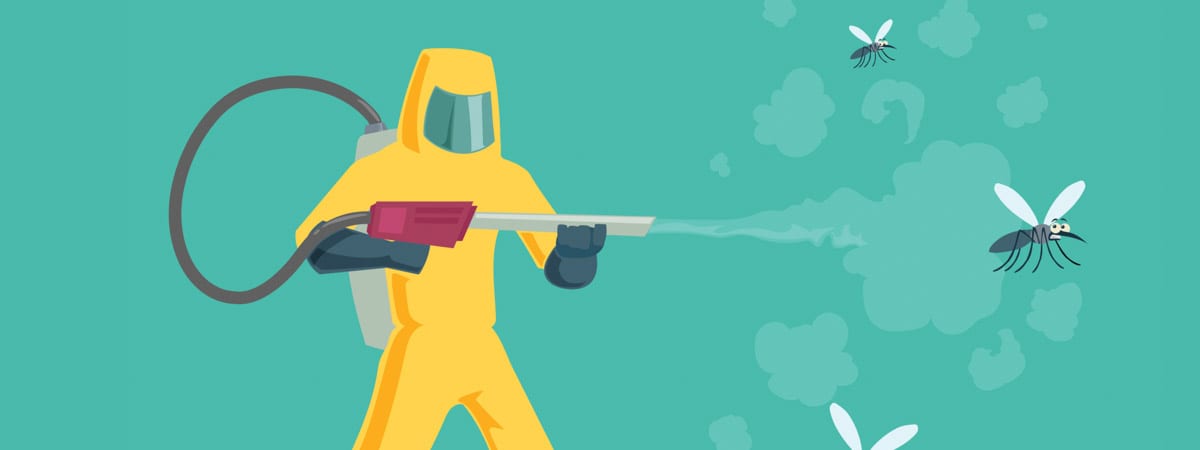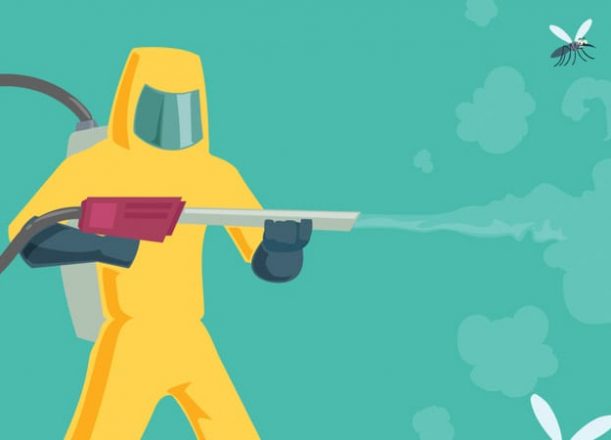Pest control includes the management and eradication of pests that may negatively impact humans, crops, and structures.
For some, pest eradication may not seem like a big deal. But if you are unable to control pests and it starts to affect your daily life, it’s a problem that needs to be addressed immediately.
In the post below, I outline five basic types of pest controls and how they work. This will help you understand which type may be better suited for a pest free home.
5 Types of Pest Control Methods
1. Biological
The first type of pest control is by biological eradication. Biological pest eradication refers to introducing animals (the predator) that are not originally part of the environment as a way to try and eradicate the pests (the prey).
It’s proven to be effective depending on the pest, and it’s also a chemical-free option to address your pest problems. [1]
You do have to be very careful when you use this form of pest eradication. It may result in an overpopulation of the predatory species that you introduced to control the pests.
- Example: The biological pest control of silverfish, including spiders and other bugs, are the most common ones. If you let spiders enter to your home, it can control the silverfish population. However, you may soon find far too many spiders in your home and would have to deal with them.
2. Natural

Natural pest control is gaining more popularity as people keep on looking for ways to eradicate pests without using chemicals.
Some people are using essential oils to repel pests in their house.
- Essential oils: This often includes peppermint, citronella, and lemongrass. These are the popular oils that are effective in eradicating insects.
- Pro: It smells good, is easy to get, inexpensive, and mostly safe to use around your pets and family. First, you mix these oils with water and spray them around your home.
- Cons: They’re often useful for short-term repelling of pests. However, you’ll need application continuously to different areas of your home to eradicate the pests.
3. Chemical
One of the most popular ways of pest management available today is chemical pest controls or pesticides. You can use these chemical pest controls in your own homes.
If you choose chemical pest eradication, here are some points that you need to remember:
- Most chemical manufacturers recommend that you call a professional company to provide their services.
- It is advised that professionals must spray the pesticide in different areas of your home, for your own safety.
- You can ask them the precautions you need to observe after they spray it in your house. Pesticides can potentially cause damage to a human’s health.
- It can even enter the body through the lungs and cause a respiratory problem or skin disease.
- Chemical pest controls are much useful because they even go to the heart of the infestation.
- It will kill almost all pests that are currently in the different areas of your house.
- The chemicals also form a type of barrier that keeps any more pests from causing any more problem in your home or lead to further damage.
- You’ll need a vacuum cleaner designed for pests to pick up remaining eggs and dead insects.
4. Traps

Traps are another form of pest management. It is even more popular for pests such as rats, but they do work with bugs and insects as well.
You need to place the trap around your home where you’ve noticed the pests the most. Here are some of the examples and types of pest traps:
- Poison trap: Place the a poison-infused food crumb in the kitchen where there are many ants. An ant trap allows the ants to drink the poison and take it back with them to their nest. This infects the ant colony and kills them from the inside out.
- Snap-type: A snap-type trap is used for pests like mice or rats. It will take time because you need baits to set the trap and wait overnight. You can use food scraps as your bait and put it on the trap. First, the rodent smells the bait, will enter the trap, tries to take the bait, and gets trapped. The rodent dies caused by the trap to be closed.
- Live trap: A live trap is a more humane option for a larger rodent as well. An example is a mouse cage where you place a food scrap inside the cage. It then closes once an activity is detected and traps the mouse.
- Pro tip: Make sure all food containers are sealed to focus their small on the trap.
5. Electronic
The final type of pest control is an electronic repellent for pests. This is a relatively new technology, and people prefer these products.
Here are some benefits of using an electronic pest repellent:
- It’s fast, easy, prevent further pest issues, useful to put out bugs and mice.
- Once you purchase an electronic pest repellent device, all you have to do is plug it into a wall outlet in each area of your home.
- This device will emit ultrasonic frequencies or send pulses through the electrical system in your home.
- It will disorient common pests that include bugs and rodents.
- If you choose an ultrasonic pest repellent to get the job done, you’ll need one for each room you want to protect.
- This is safe for humans and pets too.
A quick glance at your fuse box should tell you how many you need to protect your entire home and repel pests.
Conclusion:
Now that you have enough information on the different methods to prevent pest infestation, you can decide for yourself which controlling method is the best for your home.
You can use more than one, and it may take some experimenting and time before you find the correct combination.
If you’re interested in trying the fifth method to repel pests, make sure to check out my detailed electronic pest control reviews and guide so you can choose a high-quality product.
Reference:
[1] https://biocontrol.entomology.cornell.edu/what.php


